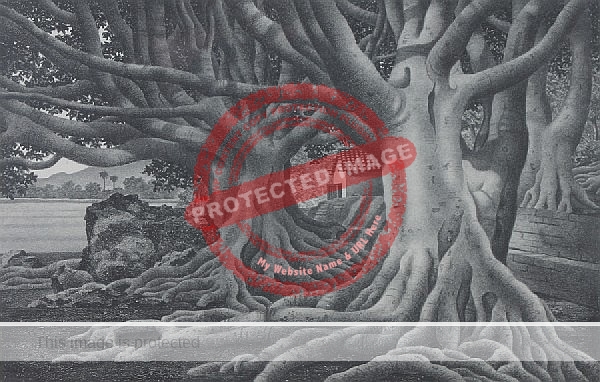Alan Horton Crane, aka Alan Crane (a name also used by his artist son), was an American artist, illustrator and lithographer who spent most of his life in New England, but who visited Mexico several times in the 1940s and 1950s.
Crane was born in Brooklyn, New York, in 1901 and died in 1969. (His son, Alan Crane, best known for his magical realism paintings, died in 2015.)
Crane senior studied at the Pratt Institute with Winold Weiss and with Richard Boleslawsky at the American Laboratory Theater. He also worked with Boleslawsky and at various other theater venues.
Weiss later used Crane as the model for one of the heads depicted in his Union Terminal mosaic mural in Cincinnati, which commemorated the broadcasting pioneers of the city. For aesthetic reasons, Weiss felt he needed someone with wavy hair to replace the head (but not the body) of radio engineer Charlie Butler, who had straight, slicked-back hair. When the Union Terminal concourse was demolished in 1974, the mural was moved to Terminal 2 at the Cincinnati/Northern Kentucky International Airport. When that building in turn was removed, the mural was relocated to the Duke Energy Convention Center.
Crane exhibited widely from about 1941 to 1956 and his art won numerous awards. He also undertook illustrations for books and magazines, and wrote and illustrated several books of his own, including Pepita Bonita (1942); Gloucester Joe (1943); and Nick and Nan in Yucatan (1945). In 1956, he illustrated Elizabeth Borton de Trevino’s book A Carpet of Flowers.
Crane was a member of numerous art groups, including the Salmagundi Club, Audubon Artists, Society of American Graphic Artists, Philadelphia Water Color Club, Guild of Boston Artists, Rockport Art Association and the North Shore Arts Association.
Crane’s work can be found in the collections of the Library of Congress, Metropolitan Museum of Art, New York Public Library, Carnegie Institute, American Society of Arts and Letters, Brooklyn Museum, Pennsylvania State College and the Princeton Print Club.
It is unclear precisely what motivated Crane to first visit Mexico, but he visited the country several times, as witnessed by a succession of superb, finely detailed, lithographs (in editions of between 40 and 50) of Mexican scenes, including “Haunted Garden, Mexico” (1947); “Indian Laurels, Chapala” (1948); “Clouds and Spires, San Miguel Allende” (1949); “The Mirror, Camecuaro” (1952); “Shadows at Noon, Patzcuaro” (1952) and “Morning Catch, Puerto Vallarta” (1959).
Sources:
- Various authors. 1964. Artists of the Rockport Art Association. A pictorial and descriptive record of The Oldest Art Organization on Cape Ann. (Rockport Art Association, Massachusetts, 1964).
- cincinnati.com Undated. “Uncovering the murals” [http://local.cincinnati.com/community/pages/murals/tablet/index.html – viewed 8 Dec 2016, no longer active]
- Jac Kern. 2016. “UC artists revisit Union Terminal worker murals with modern mission and materials”. University of Cincinnati Magazine, 11 Aug. 2016
Sombrero Books welcomes comments, corrections or additional material related to any of the writers and artists featured in our series of mini-bios. Please email us or use the comments feature at the bottom of individual posts.
Tony Burton’s books include “Lake Chapala: A Postcard History” (2022), “Foreign Footprints in Ajijic” (2022), “If Walls Could Talk: Chapala’s historic buildings and their former occupants” (2020), (available in translation as “Si Las Paredes Hablaran”), “Mexican Kaleidoscope” (2016), and “Lake Chapala Through the Ages” (2008).


Gorgeous print.
buen día, la razón de las visitas del artista a México probablemente por el matrimonio con Carlota Solórzano Gómez, prima hermana de mi padre, originarios ambos de Ameca, ciudad cercana a Guadalajara, Jalisco, recuerdo algo de su obra en la casa de mi abuela, saludos…
Guillermo, Muchas gracias por tomarse el tiempo para compartir este interesante y útil comentario. Saludos, TB.